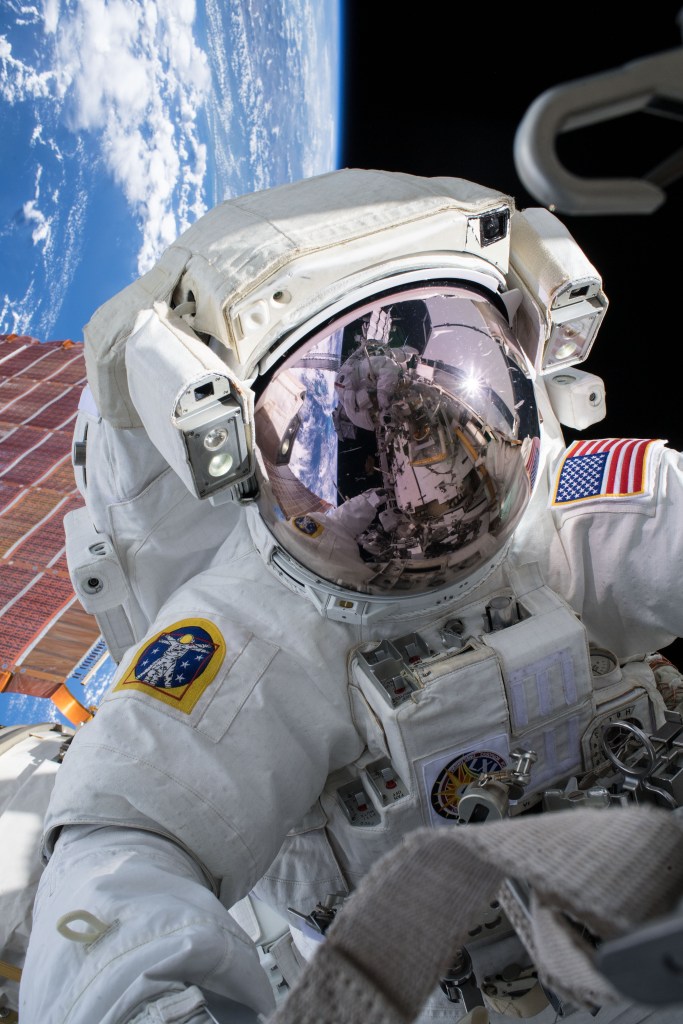Nearly a year had passed since Neil A. Armstrong made history when he stepped onto the lunar surface. Shortly after returning from their historic mission, Armstrong and his Apollo 11 crewmates Michael Collins and Edwin E. “Buzz” Aldrin took a 38-day around the world Presidential Goodwill Tour, visiting 22 countries. Armstrong announced he had no plans to return to space, and on May 18, 1970, NASA Administrator Thomas O. Paine named him Deputy Associate Administrator for Aeronautics, a position in Washington, DC, he held for about one year before retiring from the agency. Between May 24 and June 5, 1970, Armstrong traveled to the Soviet Union, a country not on the goodwill tour’s itinerary, at the invitation of the USSR Academy of Sciences. While the primary purpose of his visit was to give a talk at a conference in Leningrad (now St. Petersburg), Armstrong also traveled to Novosibirsk in western Siberia and to Moscow. His visit marked another step in the slowly warming relationship between the two space superpowers that ultimately led to the Apollo-Soyuz Test Project (ASTP) joint docking mission in July 1975.

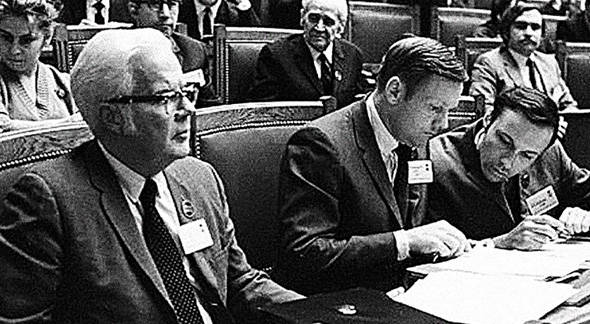
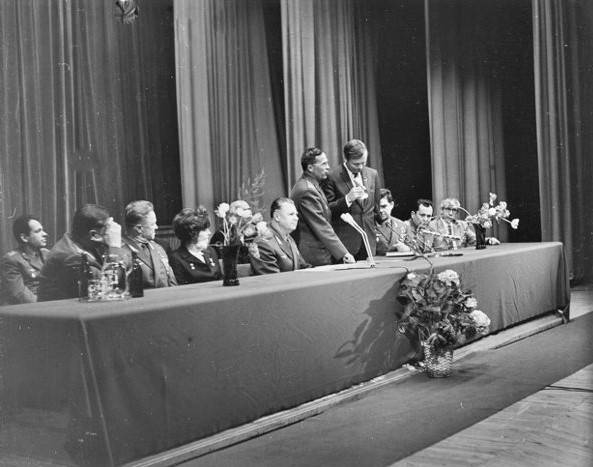
Left: Armstrong arriving at Leningrad’s Pulkovo Airport. Middle: Armstrong in the audience during
the COSPAR meeting. Right: Armstrong during a panel discussion at COSPAR.
Arriving from Warsaw, Poland, Armstrong landed at Leningrad’s Pulkovo Airport on May 24, only the second American astronaut to touch down on Soviet territory, following Frank Borman’s visit in early July 1969. Soviet cosmonauts Georgi T. Beregovoi and Konstantin P. Feoktistov welcomed him at the airport and served as Armstrong’s hosts throughout his Soviet travels. Beregovoi and Feoktistov had visited the United States in October 1969, including the Manned Spacecraft Center (MSC), now the Johnson Space Center in Houston, but did not meet Armstrong as he was on the goodwill tour. Armstrong spent five days in Leningrad, attending the 13th annual conference of the International Committee on Space Research (COSPAR). NASA Deputy Administrator George M. Low also attended the conference and held private discussions with Soviet counterparts regarding future cooperation in space, early steps on the road that ultimately led to ASTP.
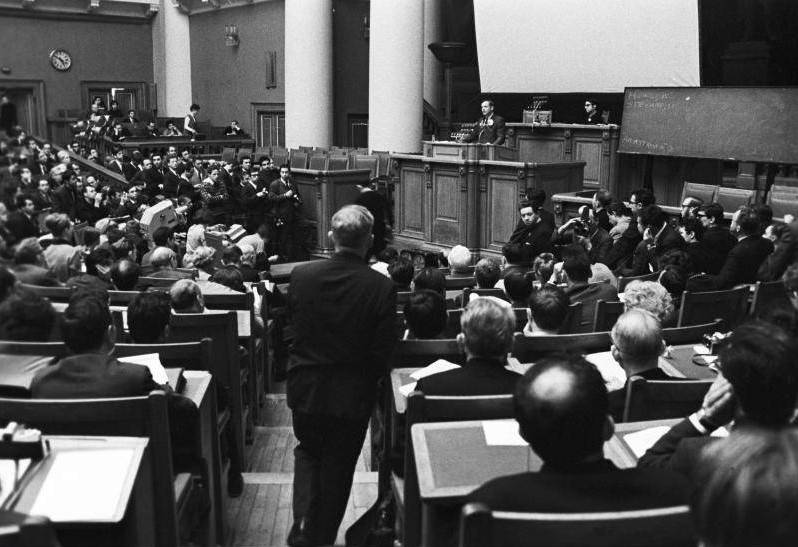
Armstrong giving his talk at the COSPAR meeting in Leningrad’s Tauride Palace.
Armstrong gave his talk entitled “Lunar surface exploration“ on May 25 to an enthusiastic audience of more than 1,200 delegates from 30 countries. Three days later, he narrated films of the Apollo 11 and 12 missions, with the 18th century Tauride Palace, once the seat of Russia’s parliament, serving as the venue for the COSPAR meeting. During his stay in Leningrad, Armstrong’s hosts took him sightseeing to some of the city’s most notable and historic places, including the Piskarevskoye memorial cemetery, the Hermitage Museum, the cruiser Avrora, the Naval History Museum and the Peterhof Palace.
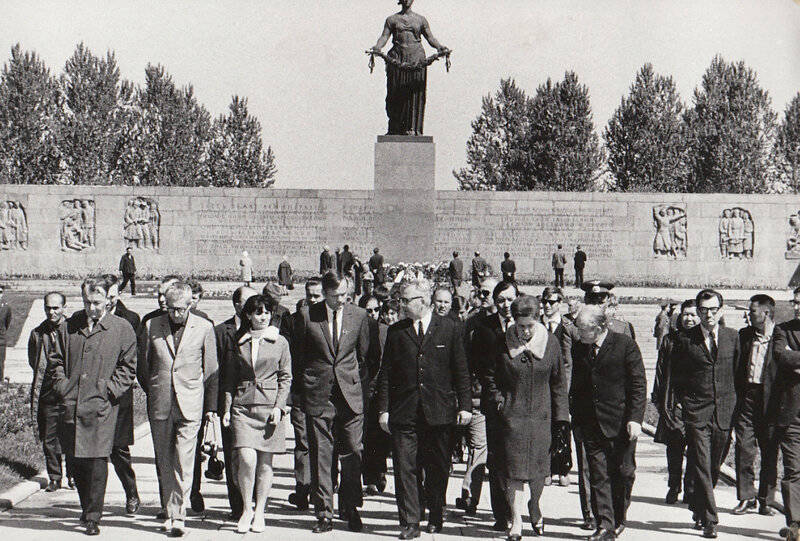

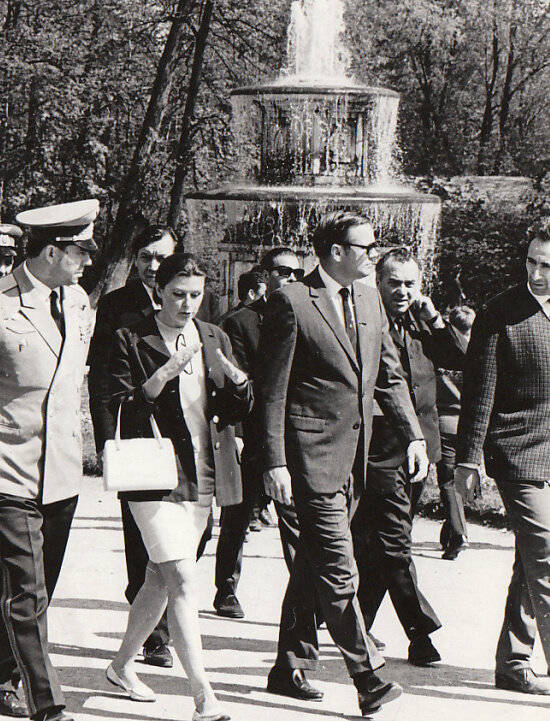
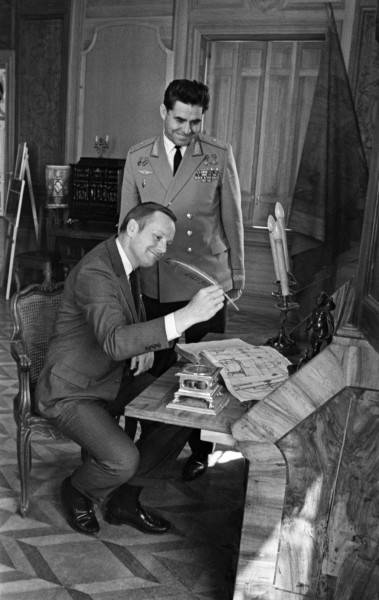
Scenes of Armstrong touring in Leningrad. Far left: At Piskarevskoye memorial cemetery.
Middle left: At the Hermitage Museum. Middle right: In the gardens of Peterhof Palace.
Far right: “Behind the ropes,” holding a quill in Peter the Great’s study.
On May 29, Armstrong and his hosts flew to the Siberian city of Novosibirsk, home to the closed Soviet science city Akademgorodok. Academician Mikhail A. Lavrentyev of the Siberian Branch of the USSR Academy of Sciences welcomed them at the airport, and along with Novosibirsk mayor Ivan Sevastyanov, acted as his local host. In addition to scientists, Armstrong also met with schoolchildren in the Young Technicians Club in Akademgorodok, making this entry into the Distinguished Guests Book: “Continued best wishes in building the world of tomorrow.” Armstrong’s hosts took him on a tour of the city, and for relaxation invited him, Beregovoi, Feoktistov and several scientists aboard the yacht Fakel for a cruise to an island in the nearby Ob reservoir. Despite inclement weather on the way out to the island, the group enjoyed a lovely picnic in the countryside with Armstrong contributing his culinary talents to the making of a pot of fish soup called ukha. While in Novosibirsk, Armstrong reportedly collected a handful of soil from outside the house of Russian engineer and rocket scientist Yuri A. Kondratyuk, who early in the 20th century developed the first concept of Lunar Orbit Rendezvous, the mission profile NASA chose for the Apollo Moon landing missions. In 2016, Novosibirsk State University commemorated Armstrong’s visit to Akademgorodok with a marble monument laid near the building of the Physics and Mathematics School.
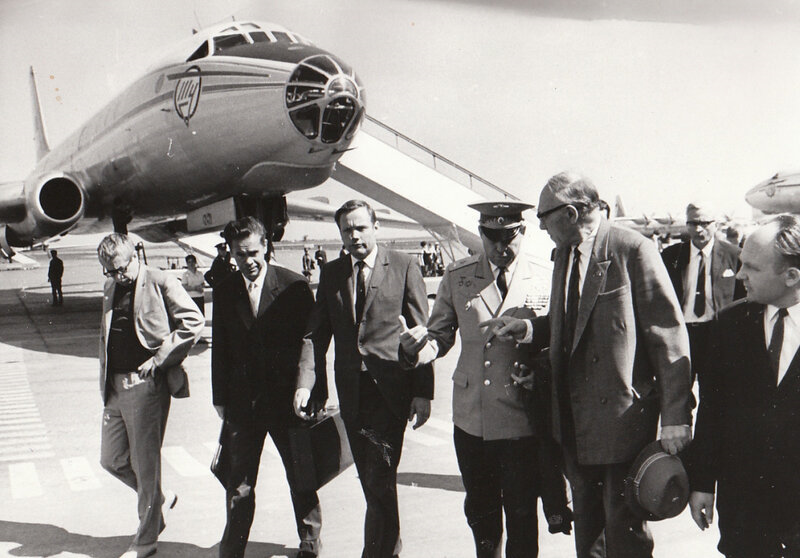


Left: Armstrong arriving in Novosibirsk. Middle: Touring the Glory Monument in Novosibirsk.
Right: Laying flowers at the eternal flame of the Glory Monument in Novosibirsk.
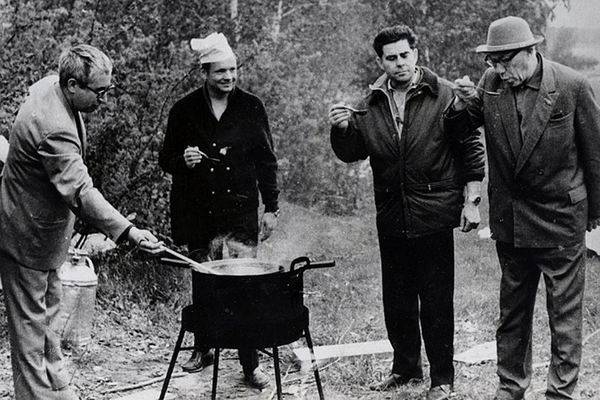
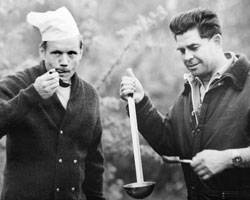
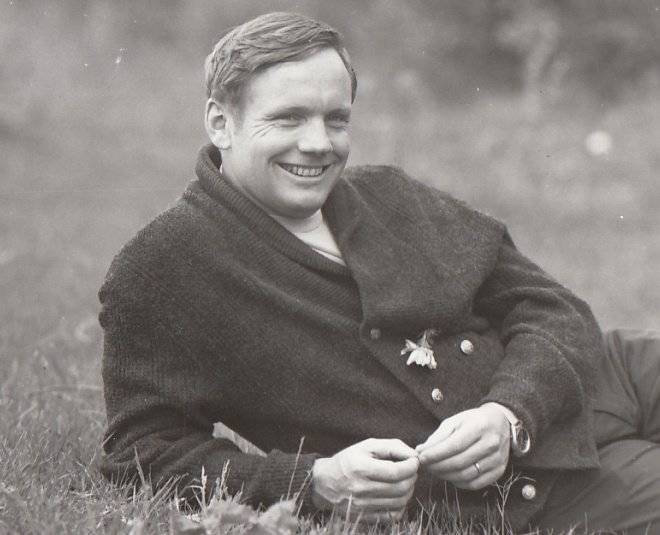
Scenes from the outing to the island on Ob Reservoir. Left: Cooking ukha.
Middle: Armstrong and Beregovoi tasting the ukha they helped prepare.
Right: Armstrong enjoying a peaceful moment.

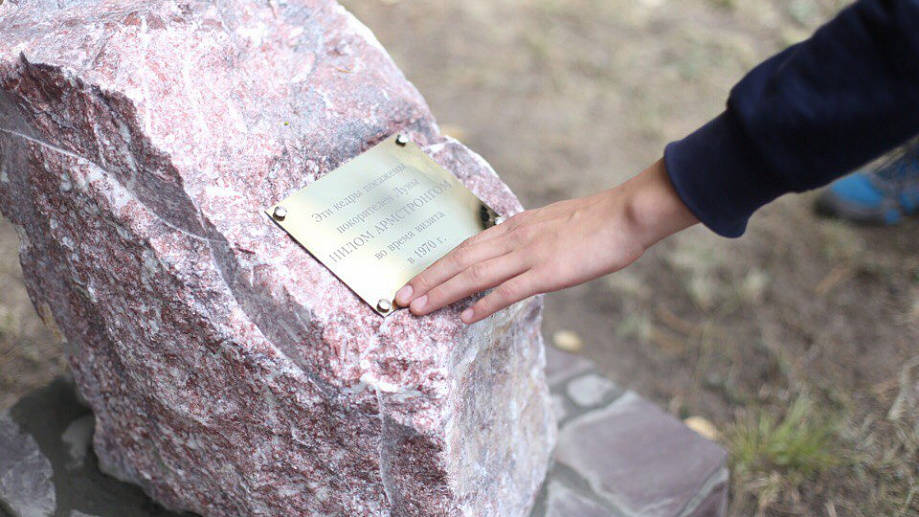
Left: Armstrong (at center, wearing sunglasses) enjoying a picnic on the island.
Right: Marble monument to commemorate Armstrong’s visit to Akademgorodok
in Novosibirsk.
In the evening of May 31, Armstrong and his hosts boarded a commercial airliner to Moscow, the passengers blissfully unaware that for part of the flight Armstrong and Beregovoi took turns piloting the aircraft. Over the next five days, they toured Moscow’s Red Square including Lenin’s tomb, laid a wreath at the tomb of the unknown soldier in Aleksandr Garden and flowers at the ashes of Yuri A. Gagarin, the first human in space, entombed in the Kremlin Wall. Accompanied by US Ambassador Jacob D. Beam, Armstrong met in the Kremlin with Chairman of the USSR Council of Ministers Aleksei N. Kosygin for an hour and presented him, on behalf of President Richard M. Nixon, with chips from a Moon rock and a small flag of the Soviet Union that had traveled aboard Apollo 11. Kosygin said he would “always cherish this gift as a symbol of a great achievement,” telling Armstrong that “The Soviet peoples are second to none in admiring your courage and knowledge.” During Armstrong’s stay in Moscow, famed Soviet aircraft designer Andrey N. Tupolev took him to a hanger to see the Tu-144 supersonic airliner, making Armstrong the first Westerner to see the sleek aircraft up close. Tupolev presented him with a model of the Tu-144 that he later donated to the Smithsonian Institution.
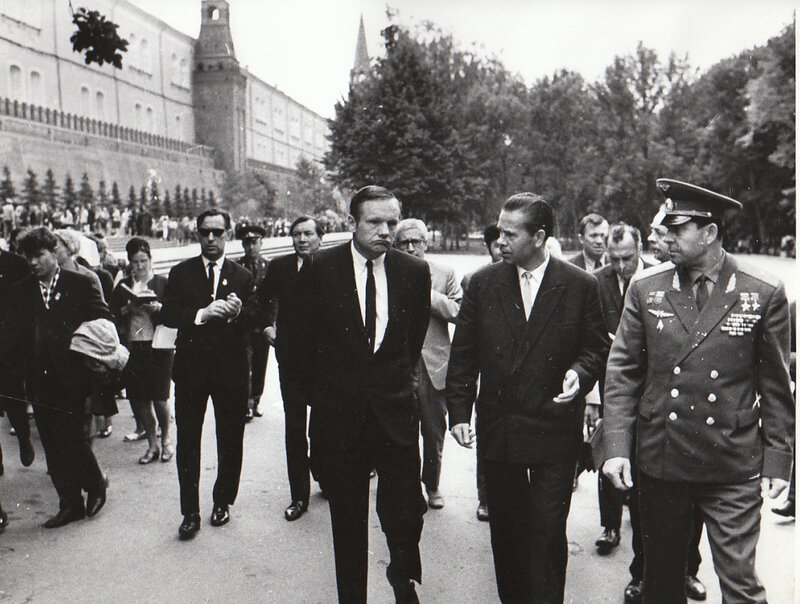
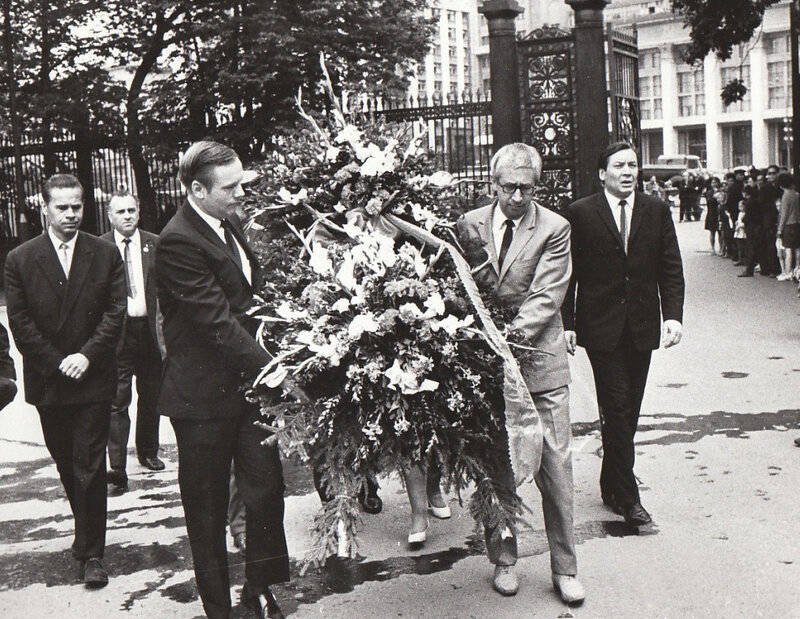
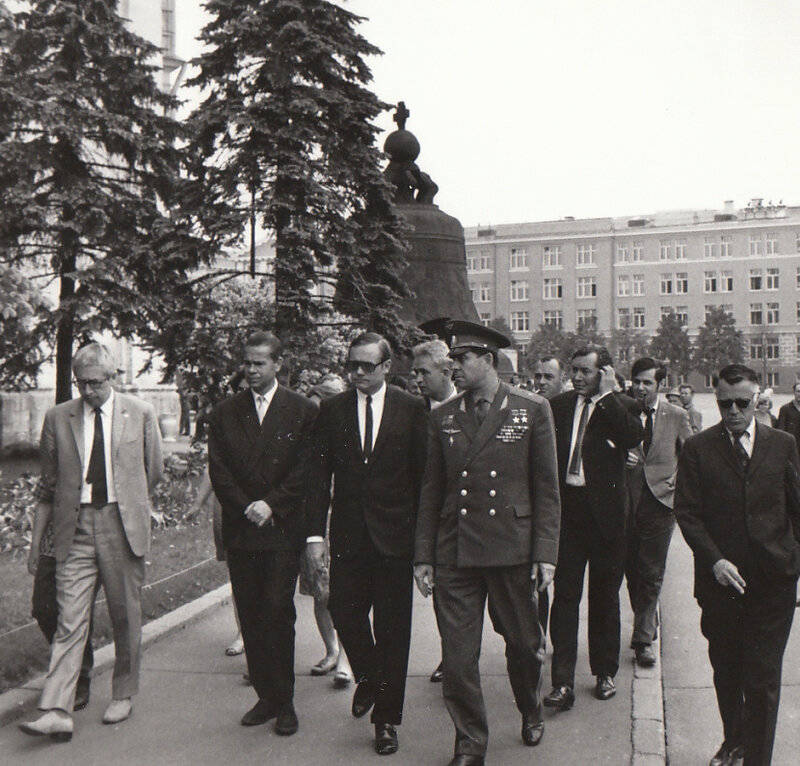
Left: Armstrong touring outside the Kremlin wall in Moscow. Middle: Armstrong (left) and Feoktistov
laying a wreath at the tomb of the unknown soldier in Aleksander Garden outside the
Kremlin wall. Right: Armstrong the Kremlin square.
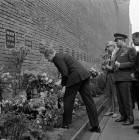
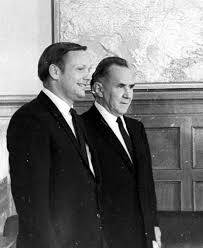
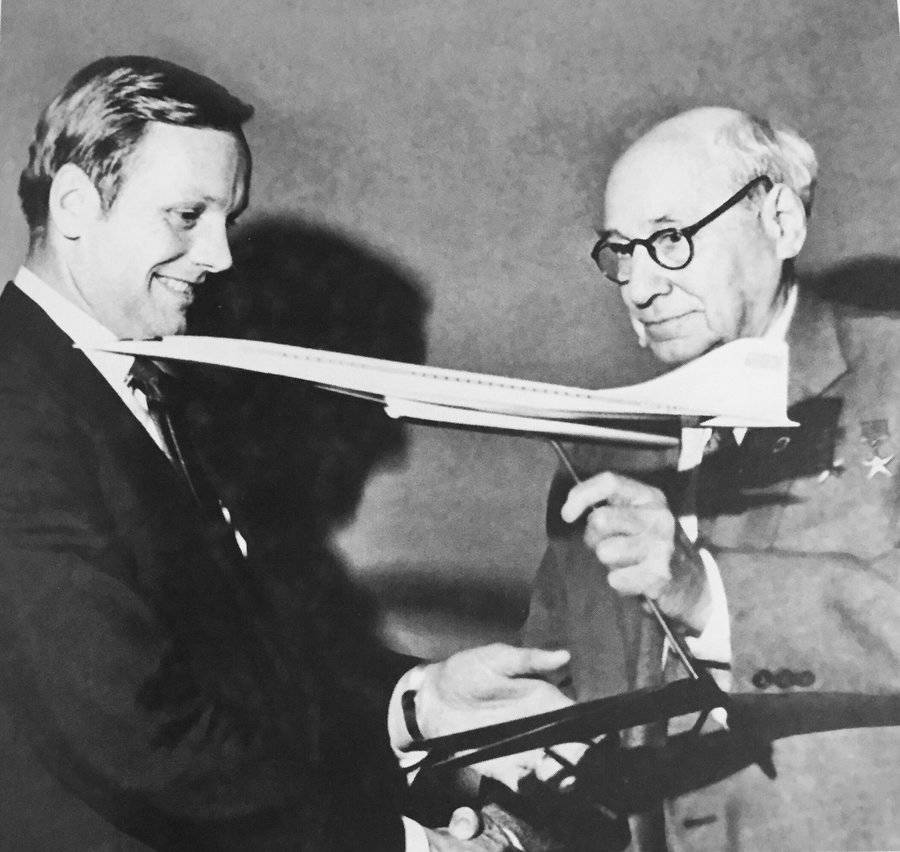
Left: Armstrong laying flowers on Gagarin’s tomb in the Kremlin Wall, as Feoktistov
and Beregovoi look on. Middle: Armstrong (left) meeting with Kosygin. Right: Tupolev (right)
presenting Armstrong with a model of the Tu-144.
Possibly the highlight of Armstrong’s trip was his visit on June 1 to the Gagarin Cosmonaut Training Center in Star City just outside of Moscow. Valentina V. Tereshkova, the first woman in space, served as his hostess for his visit. Armstrong met other cosmonauts as they showed him the Soyuz flight simulators and other training facilities and presented him with gifts such as a model of the Soyuz 4 and 5 spacecraft docked to each other. Armstrong met the widows of Gagarin, who died in an airplane crash in 1968, and Vladimir M. Komarov, a cosmonaut who had been killed during the Soyuz 1 accident in 1967. In a later press conference, Armstrong told reporters he had been “most emotionally moved” by meeting with the two widows. He and Aldrin had left a medallions on the lunar surface in honor of fallen astronauts and cosmonauts, including their husbands. During a reception in the evening, Beregovoi and fellow cosmonaut Pavel R. Popovich presented Armstrong with an engraved hunting rifle from the noted gunsmiths in Tula. Later still, in a smaller event at Beregovoi’s apartment, they showed Armstrong a tape of the launch of Soyuz 9 from the Baikonur Cosmodrome earlier that day. Remarkably, none of his hosts gave even the slightest hint of the impending launch, not even Tereshkova whose husband Andriyan G. Nikolayev was one of the two cosmonauts on board! The old Soviet policy of not announcing space launches until after they occurred could be taken to extremes. In October 1970, Armstrong met Nikolayev and his crewmate Vitali I. Sevastyanov when the two visited the United States, including MSC. Summarizing his meetings with cosmonauts, Armstrong told an audience at the USSR Academy of Sciences, “I have found in my discussions with my Soviet cosmonaut colleagues that their objectives in space are very much the same as ours.”
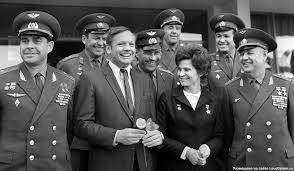
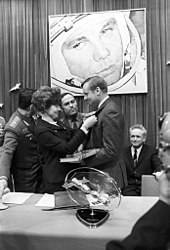
Left: Armstrong (holding flower) with Tereshkova (to his left) and other
cosmonauts and officials at Star City. Right: Three “firsts” – Tereshkova
(first woman in space) pins a medal on Armstrong (first human to step on the Moon)
as an image of Gagarin (first human in space) looks on.

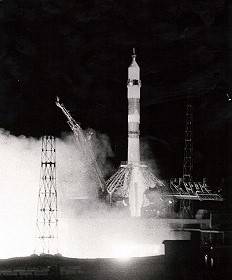
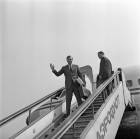
Left: Beregovoi (left) and Poppvich present an engraved hunting rifle to
Armstrong (seated). Middle: Launch of Soyuz 9. Right: Armstrong departing
the Soviet Union from Moscow’s Vnukovo Airport.
Postscript: His tour of the Soviet Union complete, Neil Armstrong boarded a jet at Moscow’s Vnukovo Airport on June 5, destination Rome, Italy, where he met his wife Janet. The next day, Janet christened Alitalia Airlines’ very first Boeing-747 named for her husband. The two then boarded the Neil Armstrong and flew from Rome to New York’s John F. Kennedy Airport.
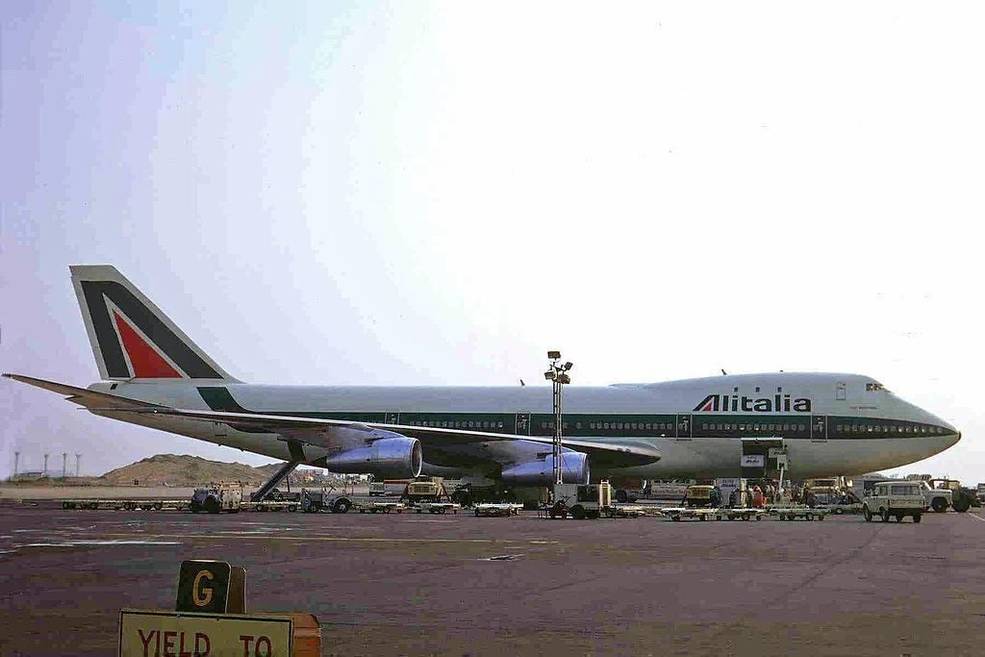
Alitalia Airlines’ first Boeing-747 named Neil Armstrong at New York’s
John F. Kennedy Airport in 1972.























